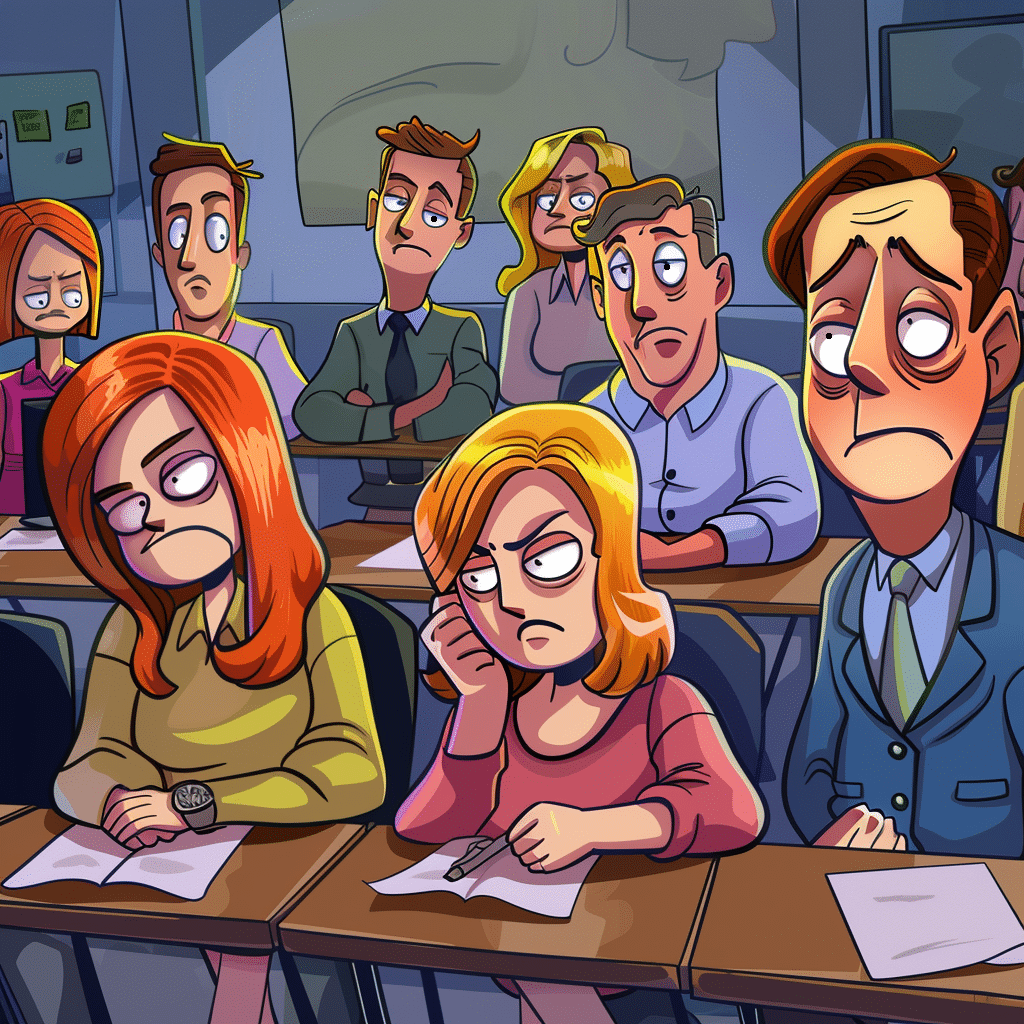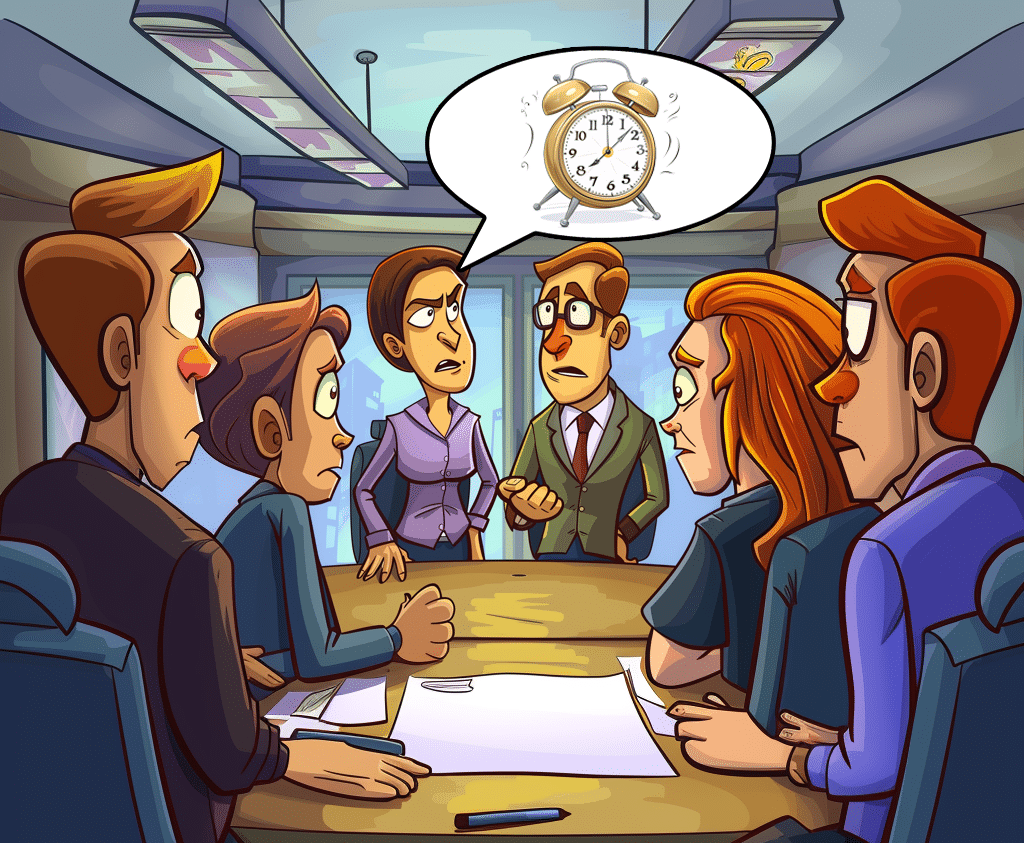“Meetings are to teamwork what concerts are to an orchestra. Without them, you just have a collection of individuals with instruments.” – Patrick Lencioni
Want to make meetings more productive and less painful? Here are several things you should start doing today:
Set and publish the purpose of your meeting in advance with a clear agenda
Are you striving to solve a tactical, short-term problem or a critical strategic issue? Will participants be asked to brainstorm with a whiteboard, provide a quick update, decide amongst numerous ideas, or get stuff done? Don’t try to do this all-in-one meeting. If you do, it may feel “efficient,” but people will leave confused, dissatisfied, and unproductive. These types of meetings require different talents to lead and potentially different attendees with different goals and metrics for success.
Clarify what is at stake
Do participants understand the “plot line” of the meeting? In other words, what is the question you want to answer, and why does it matter? Do participants understand how the team will benefit from a great answer and the consequences of a poor response? If you can’t reduce the purpose of the meeting into one or two over-arching questions, re-think it and consider having more than one meeting. Lack of clarity causes confusion, frustration, and boredom; worse yet, it leaves people feeling (and talking to each other about how) you have wasted their time and are clueless about leveraging their talents collectively.
Know the meeting’s purpose and plan to “direct” it like a great story
 What is your hook to get people engaged in the first 10 minutes? If you don’t tee up your topic and dramatize why it matters, you might as well invite participants to check out. Every meeting should have a compelling beginning, just like a great movie. If the point of meetings was simply to get a bunch of people together who generally care about the success of the team, then an open bar and buffet table would be easier and probably more popular. But meetings aren’t parties; they need a purpose, a story, a plan, and a call to action. If that sounds obvious, consider how often the meetings you’ve attended (whether you’re at the head of the table or not) meander along with none of that. Ask yourself what is the “win” you want everyone to recognize and celebrate on the way out the door.
What is your hook to get people engaged in the first 10 minutes? If you don’t tee up your topic and dramatize why it matters, you might as well invite participants to check out. Every meeting should have a compelling beginning, just like a great movie. If the point of meetings was simply to get a bunch of people together who generally care about the success of the team, then an open bar and buffet table would be easier and probably more popular. But meetings aren’t parties; they need a purpose, a story, a plan, and a call to action. If that sounds obvious, consider how often the meetings you’ve attended (whether you’re at the head of the table or not) meander along with none of that. Ask yourself what is the “win” you want everyone to recognize and celebrate on the way out the door.
One practical way to accomplish meeting clarity is to pare that list of proposal topics from ten to two, for example. Another best practice is to save the last 10 minutes of the meeting for a simply worded question asking the team, “So we’ve agreed on ‘x,’ correct?” And “x” should include precisely what was decided, who will do what next, and how the team will measure success at the next meeting. Think of yourself more as a “Director” than a “Boss,” and you’ll start to get it.
Set aside enough time
Do you find yourself constantly ending meetings before a resolution has been achieved? Too many leaders emphasize punctuality (starting and ending on time) over effectiveness. So, if you’re going for a timekeeper trophy, have at it. Everyone else, pay attention. It’s a problem when we try to fit three movies into one. We do this because we believe it’s more important to keep all the storylines going and to finish the movie on time and on budget than it is to get it right. Haven’t we all wasted $25 on a theater seat, dry mouth from a bucket of oversalted, burnt nuggets that barely passed for popcorn, and a jumbo Coke that raised our blood sugar and our pulse so we could witness yet another horrifically bad over-hyped effort at the box office? It won’t take long, if you really think about it, to realize that any director who did that would lose their audience in the first 5 minutes. Quality over quantity is a thing for a reason. And it doesn’t just apply to movies, wine, and children. Slow down. Patience and planning win the race at the box office where your employees line up.
Unlock your leadership potential with Executive Coaching.
Explore how PointerWise can help you succeed!
Mine for conflict
 If everyone feels comfy and cozy during meetings and there’s zero thunder and lightning in the room, you’re not getting to “what people really think.” In fact, you’re probably miles away from even scratching the surface of important issues. Artificial harmony is a bitch. It saves time, for sure and nothing significant happens. You might as well have taken in the 20 minutes before that movie and gone home to take a nap.
If everyone feels comfy and cozy during meetings and there’s zero thunder and lightning in the room, you’re not getting to “what people really think.” In fact, you’re probably miles away from even scratching the surface of important issues. Artificial harmony is a bitch. It saves time, for sure and nothing significant happens. You might as well have taken in the 20 minutes before that movie and gone home to take a nap.
Eleanor Roosevelt once said that great minds discuss ideas, average minds discuss events, and small minds discuss people. We land on the best ideas only when great minds engage in debate about ideas. Personal attacks and conflicts that feel “unsafe” personally are toxic. But it’s crucial that a leader fan the fire of passionate ideological debate. How would you feel if you went to a movie and saw that the characters never considered the perfect solution and never resolved their hidden conflicts but did really well at being nice to each other and venting pointlessly to their significant others (including their dogs and cats)? Would you pay to see that? Well, your employees would pay not to have to see it. That’s why they’re looking for another job on your dime.
Be selective about who attends
 A business meeting isn’t a free film festival. Keep the guest list tight. Too often, people are invited because “they might need to know what’s going on.” That’s forcing people to abandon important work that gets measured and gets them paid and strapping them to a chair to watch paint dry on the restroom wall. It’s also why your mom says she can’t throw anything in her basement out because “someone might need that.” Just ask yourself why. And who pays for your being so “generous” with other people’s time?
A business meeting isn’t a free film festival. Keep the guest list tight. Too often, people are invited because “they might need to know what’s going on.” That’s forcing people to abandon important work that gets measured and gets them paid and strapping them to a chair to watch paint dry on the restroom wall. It’s also why your mom says she can’t throw anything in her basement out because “someone might need that.” Just ask yourself why. And who pays for your being so “generous” with other people’s time?
Give assignments before the meeting and hold people accountable
If meetings are to be anything more than bull sessions, people must bring solid information and anticipate playing their “part.” And often that requires assigning work before the meeting.
Go short and don’t look back
Stop defaulting to 60, 90, 120, or more minutes for your meetings. Have you not noticed that you fill up whatever time you have and still don’t get to everything? Then we say, “Oh, we needed more time!” No, we didn’t. We needed more discipline and less thinking out loud about irrelevant or unhelpful stuff. We needed a plan. We needed half the people we invited. We needed to let some of the people we invited go earlier and to set the meeting for less time in the first place.
Simply put, the best way to have shorter meetings is to stop having longer meetings. Substitute a kitchen-sink session with a series of quicker ones with more precise goals. “We need to have tactical meetings where we get together for a shorter time and talk about exactly what we’re trying to accomplish,” says Lencioni.
Want your team to be excited about work again?
PointerWise facilitates Team-Building Workshops and Retreats.
If possible, skip it entirely
Before scheduling a meeting, ask yourself a simple question: Is it necessary? That might seem obvious, but meetings are too often called as a reflexive response to a problem that can be more easily handled with a call, e-mail, or asynchronous “jam” on Slack or whatever platform you use.
“The important thing is: What are we meeting about? What is the goal? Why have a meeting at all?” says Marc Cenedella, CEO and founder of TheLadders.com, a job search site. “You’d be amazed at how rare it is for people to ask those simple questions.”
Don’t suffer in silence – accountability wins your time back

If a meeting suddenly veers from its stated purpose of, say, reviewing new software for the office to how the boss is using new software to improve his fantasy football picks, there’s no reason to take it sitting down. Your time is not just a personal asset when someone is paying you for it. Protect it like you would your bank account. Speak up respectfully if our facilitator loses control and ask to get back on point. And if that doesn’t work, set an example by politely excusing yourself. Accountability for meeting efficiency is a peer-to-peer operation.
If you’re presenting, tell a story with the “Bottom Line On Top”
It better be good. Don’t make people wade through how you wrote the subplots. Nobody wants to hear that. Nobody. Your dull, too-detailed, overcooked bazillion slides that you pumped all your best turns of phrase into? Burn that. Whatever amount of time you think you need to explain it all, cut that by 60 to 75%. What lines advance the story and require action in this meeting – not “I just want to be seen for how hard I worked and how smart I am.” Yes, those things are important – but going for that in a meeting is the equivalent of kidnapping your colleagues and making them watch re-runs of Barney (He’s a purple dinosaur. Look him up. You’ll be sorry) until they beg for mercy.
When making a presentation at a meeting, try this “BLIND“ approach to your delivery plan:
- Bottom Line on Top: Get to the point or points up front and quickly – People will appreciate understanding the storyline they are participating in and where they might be needed (or not).
- Impact on the Organization: Why does this thing you’re talking about matter to the team?
- Needs or Next Steps: What is your “ask” of your colleagues? Or what are the next steps they care about?
- Details: Here’s where you offer to back up your presentation with more information and answer people’s questions. Note, you offer. If they’re good, you’re good. Sit down. Enjoy the next person respecting your time and talent by doing the same.
“A meeting is an event where minutes are taken and hours wasted.”
– Captain James T. Kirk, Starship Enterprise
Let’s talk about your organizational needs.
Contact PointerWise today!






